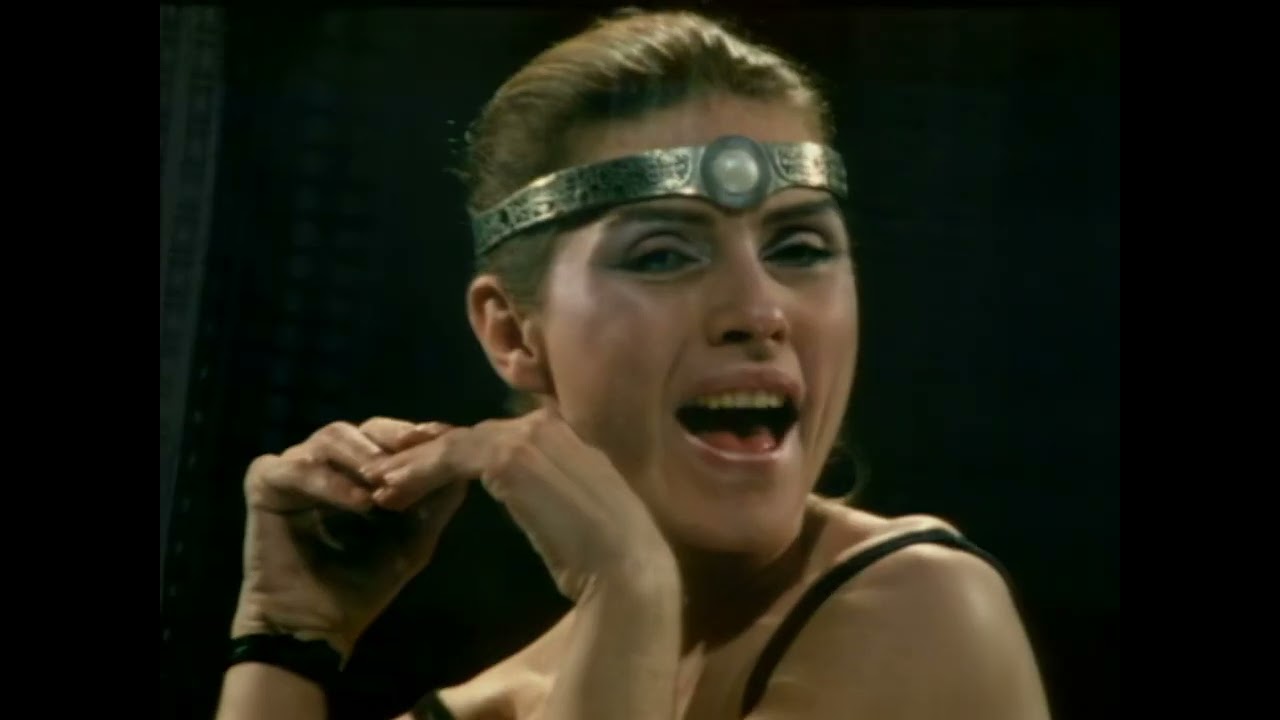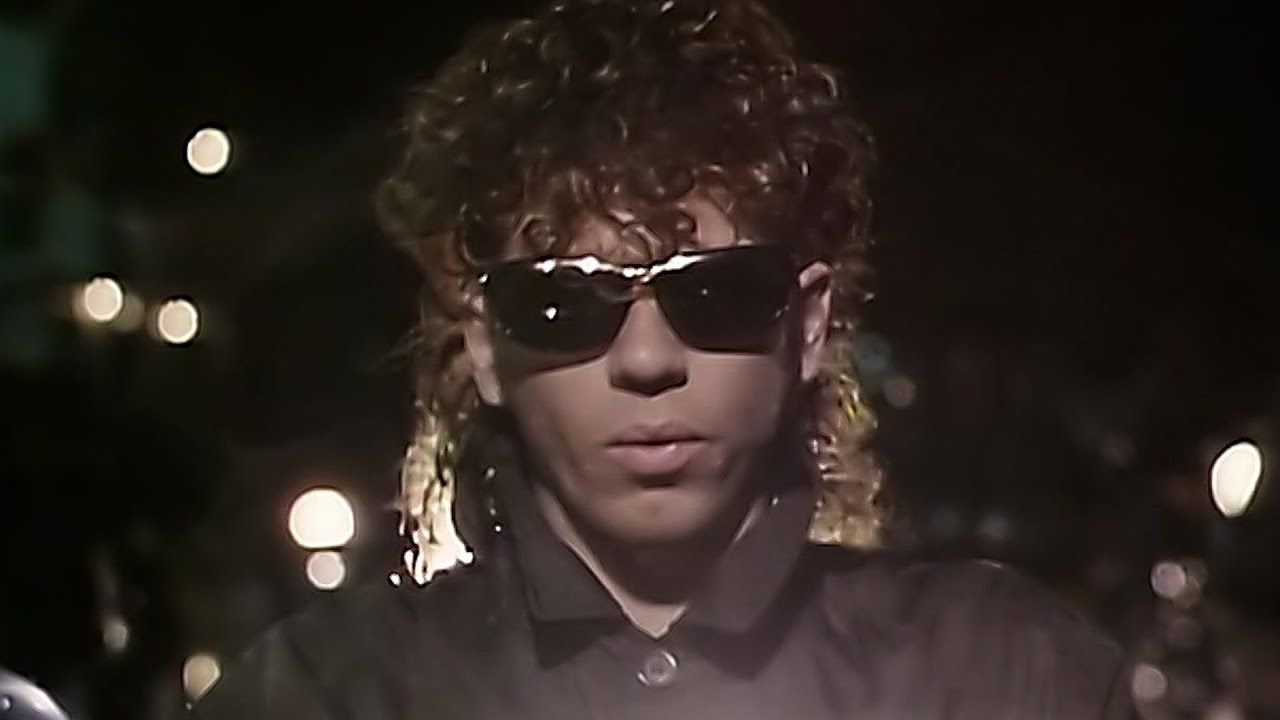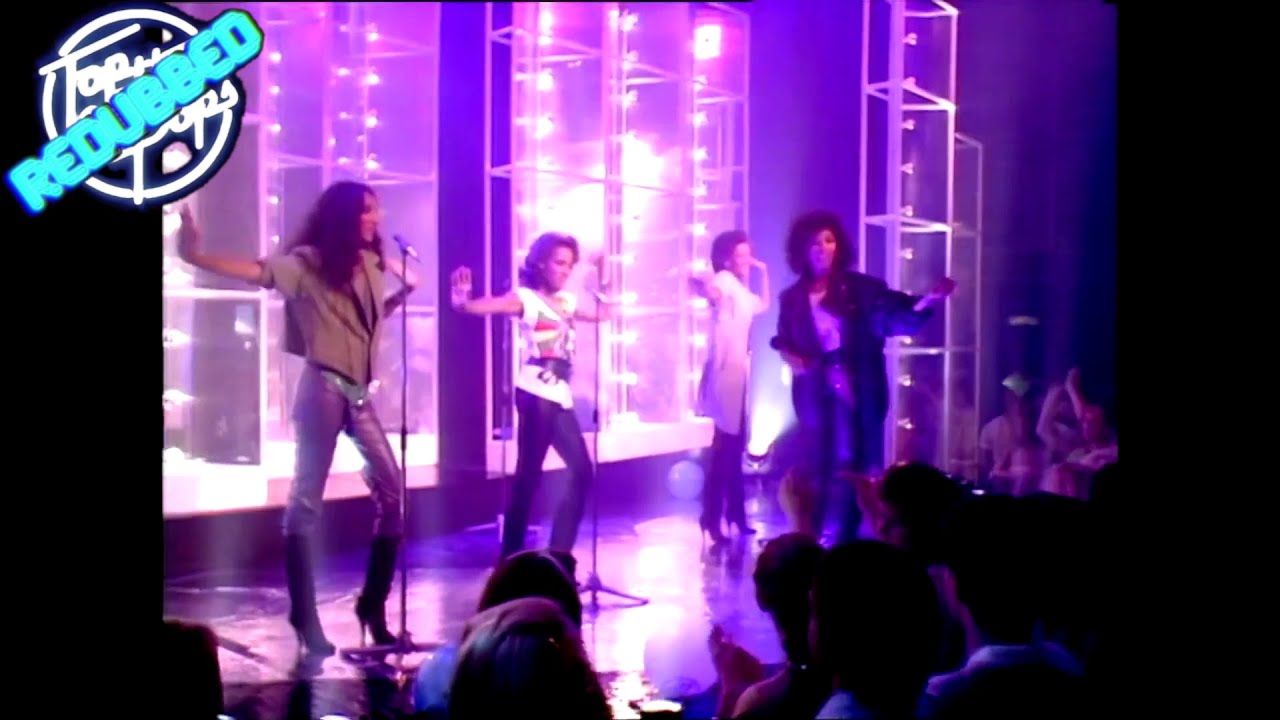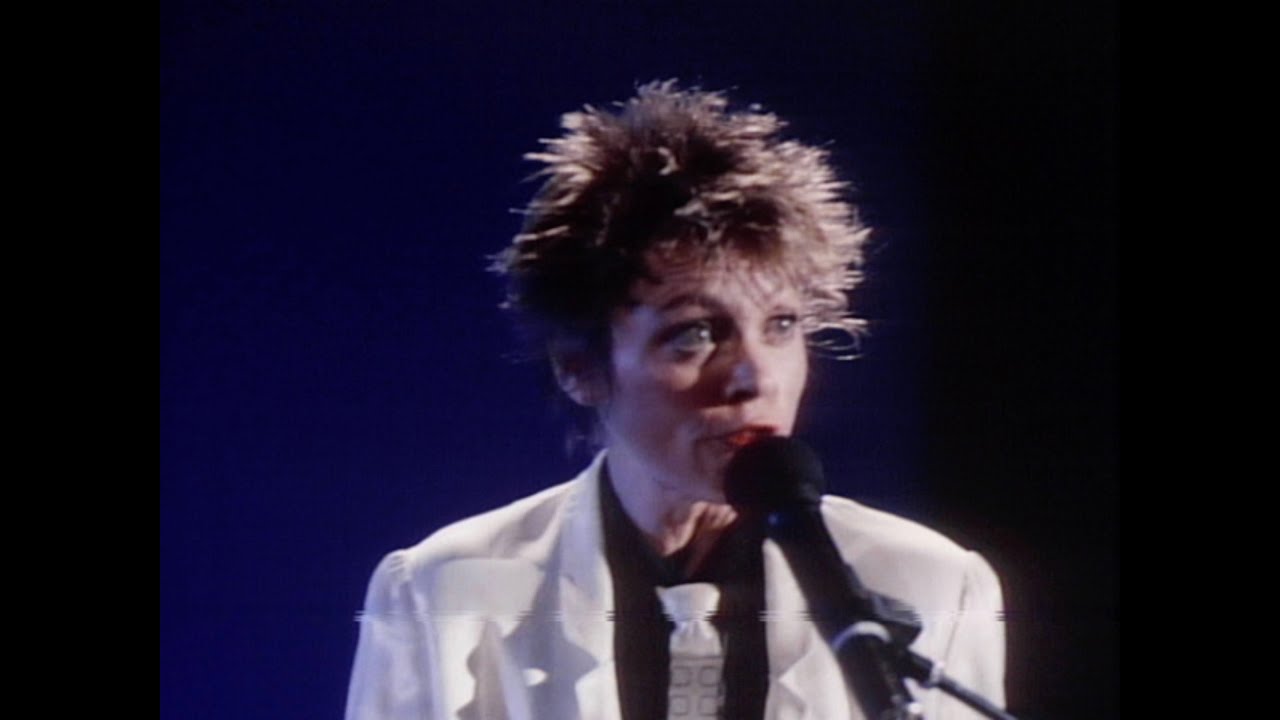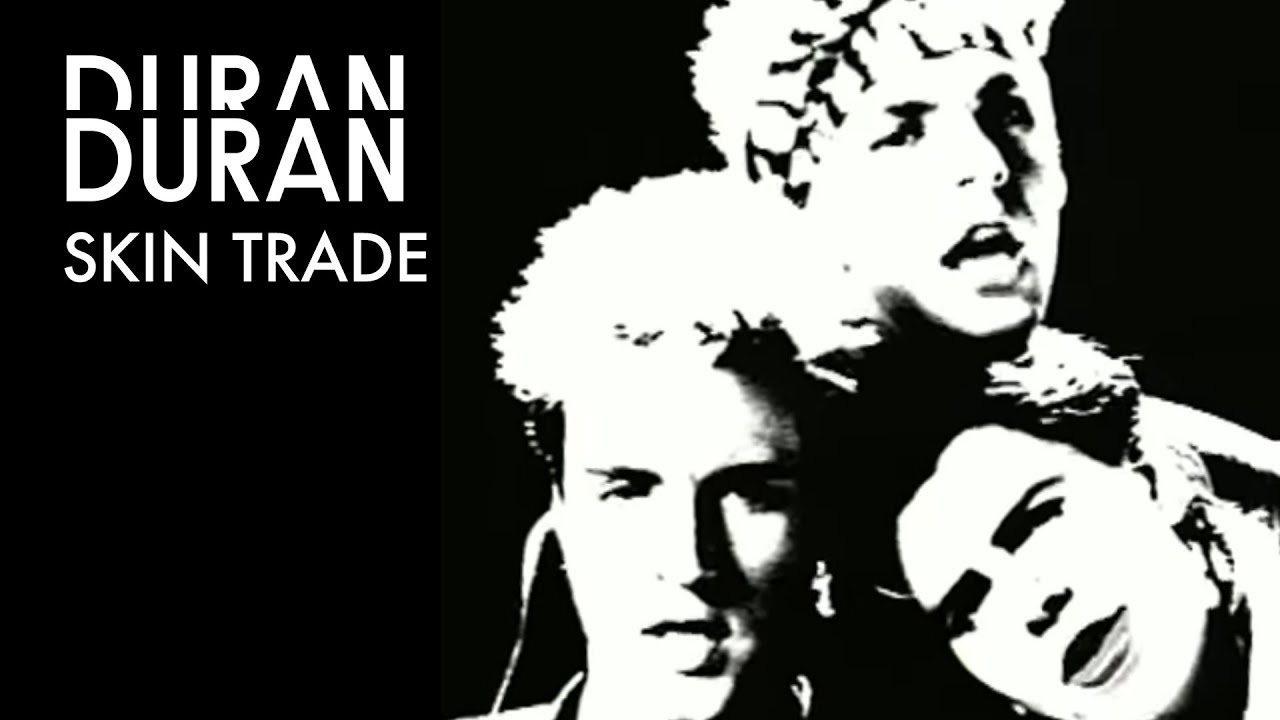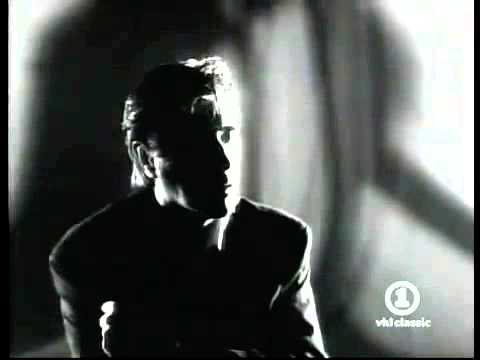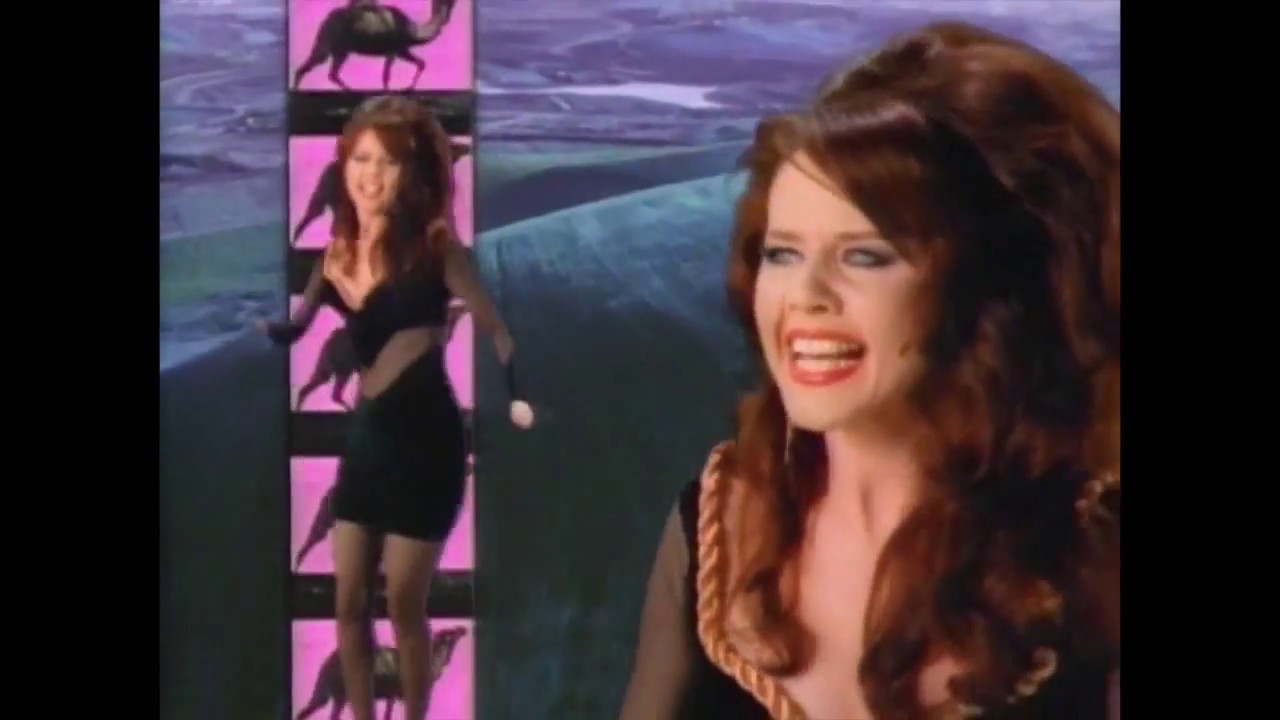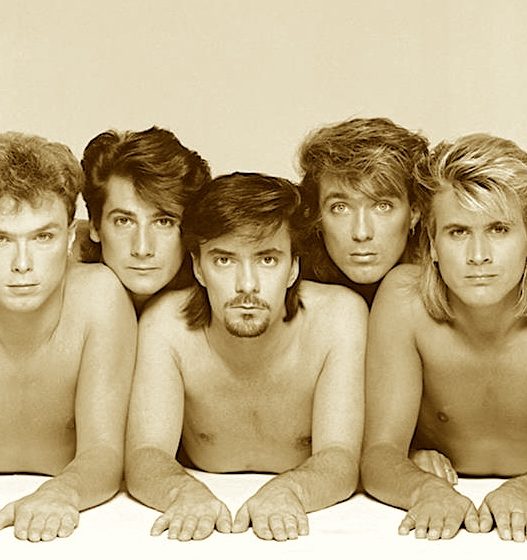“Nile has worked with so many kinds of musicians, and every record he’s made is a great one as far as I’m concerned. He has the pop thing in him really strong, and he’s done great dance stuff with Chic and Sister Sledge and all those others. And he’s worked with a lot of female vocalists like Diana Ross. I identified with him, too. He’s a real street person, and we hung out at the same clubs. Even before I started to interview producers I thought he was the one I wanted for the second record.”
So said the savage jaw of Madonna Louise Ciccone in 1984, doing the promo rounds for Like A Virgin. And if I can paraphrase his band Chic:
Rodgers never let you down
Puts a smile on your face
Clap your hands and listen to those dancing feet
Born 19 September 1952 in the Lower East Side of New York City, prolific production go-to Nile Gregory Rodgers Jr. is one of the rare studio supremos who bridges the gap between the classic understanding of a record producer and today’s digital music-maker.
After a musical education that saw him jam with Jimi Hendrix, support the Jackson 5 and help put Luther Vandross on the map, Rodgers’ rhythmic schtick saw him form delectable disco outfit Chic with bassist Bernard Edwards. Bringing some sorely needed style and intelligence back to exuberant edgy pop, they aspired to be the black Roxy Music. The witty welding of funk, jazz and soul influences allowed them to create the definitive dance floor fusion, having their fingerprints on many of the most famous recordings of our times in the process.
Niles’ distinctive guitar work has been all over the last half century of pop music like a slinky worst kept secret: from Prince and Page & Plant to Adam Lambert, Bill Laswell, Britney Spears, Lady Gaga and, er, Thompson Twins via his more recent work via Avicii, Beyoncé, Chase & Status, Coldplay, Daft Punk and Sam bloody Smith (oh, plus the obligatory posthumous George Michael retool), Rodgers is everywhere. And he can tell a story or ten too. Admit it, you’ve probably heard them more times than you can say Yowsah, Yowsah, Yowsah!
“Quincy Jones said it best,” explained Rodgers in his 2011 autobiography Le Freak: An Upside Down Story Of Family, Disco and Destiny: “A producer of a record is like the director of a film. We had serendipitously created a production technique that would be the foundation for every project we’d do until our last breath.
And so it’s as a helmsman extraordinaire for other artists that we focus on today. In the interest of balance, that means we’ve omitted Chic and Niles’ solo work and boldly left out Bowie and Madonna too, because what is there left to say about China Girl and Material Girl? You’ll find them and the omnipresent albums they’re extracted from elsewhere on this website anyhow.
We’re also concentrating on the first full decade of Rodgers’ recording career, a time when arguably the majority of his most famous creations were birthed. As the 1970s mutated into the 1980s, Nile and ‘Nard defied the cancel culture of Disco Sucks by moving more heavily into work for outside acts.
Indeed, Nile Rodgers was possibly the decade’s greatest arch-networker, and as a preamble to the primer, it would be amiss not to single out Sheila & B. Devotion’s sci-fi themed Spacer, a disco evergreen from the tail end of 1979 that has gained new audiences via its use in the played at the 2024 Paris Olympics opening ceremony, not to mention a more than liberal interpolation in Alcazar’s Crying At The Discotheque, a modern classic that was also covered by Sophie Ellis-Bextor in 2020.
Not only was attendant album King Of The World – the second and final LP by said French disco troupe – released the day after my 11th birthday, but it was one of six – count ‘em! – albums to be written and produced by Rodgers and Edwards in 1980, the others being Chic’s own Real People, Sister Sledge’s Love Somebody Today, two then inexplicably unreleased projects for Fonzi Thornton and Johnny Mathis… and a multiplatinum selling magnum opus from the ultimate diva,
Respectfully, I say to thee, dig out your dancing shoes as we trace the source of the Nile, as Pats, he’s turned 72! Attempting to tell the first chapter of the career of this extraordinarily influential musician, here’s the Perfect 10 of Rodgers productions more than acceptable in the ’80s and beyond.
To get those balls rolling, because no one makes you feel like Di do, here’s Miss Ross…
Diana Ross — I’m Coming Out (1980)
“Diana was an icon in the gay community. I wondered ‘What would it be like if Diana celebrated her status among gay men with a song?’ Bernard agreed that it would be a cool idea to have Diana talk to her gay fans in slightly coded language. I’m Coming Out was the smash result. We originally envisioned the song as the opening to Diana’s live show. The horns in the song’s intro were a soul fanfare for the pop diva.” – Nile Rodgers
A milestone in the former Supremes singer’s glittering career, in one way I’m Coming Out is almost all about the intro, which builds and builds to virtually a full minute in triumphant marching military band stylee before opening up into one of the most uplifting pop chorus hooks ever. Cursory nods to Chic’s Good Times, particularly the horn arrangement (jazzy trombone solo courtesy of Meco Monardo) and Nile’s hallmark – that fabulously fluid rhythm guitar – hold this LGBT anthem together to powerhouse effect.
Although famously unhappy with the original mixes, the attendant 1980 album Diana – her goodbye to Motown and ‘coming out’ from under Berry Gordy’s control – singlehandedly reinvented Miss Ross’ musical persona and chart fortunes with a sassy set that also includes the equally ebullient hits such as My Old Piano and Upside Down. I’m Coming Out also forced the backbone of Mo Money Mo Problems, the Puff Daddy helmed posthumous hit for the Notorious BIG.
Last word to Diana: “I like songs that are positive and say something inspirational and make a difference in people’s lives. I’m Coming Out is still one of those messages, whether it’s for gays or whether it’s for women.” Talking of women…
Debbie Harry — Backfired (1981)
Nile and ‘Nard were the production force behind the Blondie frontwoman’s first solo set, 1981’s somewhat experimental KooKoo. Despite receiving a muted response at the time, Debbie’s debut became noteworthy for showcasing an early fusion of American funk, European art rock and dance music that would become the trademark of the Chicmeisters’ production work, most evident on albums for David Bowie (Rodgers) and the Power Station (Edwards).
This also meant the prescient pair helmed one of Debbie’s most important tracks, Backfired. Its accompanying video by Swiss artist HR Giger, who also created KooKoo’s “queasy” cover with the singer “uncomfortably skewered by four foot-long needles (thanks Smash Hits).
Described by combination of punk, acupuncture and sci-fi.), the project also helped cement La Harry’s persona as a boundary-pushing performer, though the public weren’t sure what to make of Blondie becoming Brownie: in Britain, for instance – her band’s biggest market – the single stalled at 32 the same August week that Sheena Easton was in the Top 10 with the Bond theme once intended for Debbie, For Your Eyes Only.
Ouch indeed.
Carly Simon — Why (1982)
Rodgers and Edwards handled the music for 1982’s abysmal erotic romcom Soup For One. The movie rightfully tanked, but the soundtrack was a success, thanks in large part to a melodic masterpiece they penned for an established singer-songwriter in her own right.
Released at a time when Carly Simon’s career was slightly down the dumper, this bittersweet ballad finds the You’re So Vain songstress asking her lover why he treats her so badly. They patently have a failure to communicate – all they hear when the other one talks is “La-di-da-di-da,” a line repeated four times to make up the chorus. This was something of a departure for Simon, who made her name as an elegant wordsmith known for finding just the right phrase.
Also known for formidably funky drums and Bernard’s squelchy bassline, there’s enough funk in the Caribbean reggae-tinged groove to keep it moving, while maintaining that sentimental mood, thanks to Carly’s lovely longing vocals. In 1989, the song received a second lease of life among tastemakers on the Ibiza “Hacienda” scene, which cemented its status as a balearic classic, re-entering the UK charts the same year.
But as Chic championed, it don’t mean a thing if it ain’t got that Swing.
INXS — Original Sin (1983)
“I was a huge fan of Nile’s. And, of course, his work on Let’s Dance was quite sensational at the time. I really like his guitar playing on the Bowie album, which is mainly him. Stevie Ray Vaughan only played the solo on Let’s Dance. I mean, Carlos Alomar played quite a bit as well, but I know Nile’s playing so well because I’ve got every album Chic ever made. It was really good fun and I’m so glad we did that with him. And then Duran Duran went and used him.” – INXS guitarist Tim Farris
In 1983, Aussie new wavers INXS decided they wanted some of what David Bowie was having, they nabbed Let’s Dance’s multiplatinum producer Nile Rodgers, for the edgy, angular funk-pop hybrid Original Sin, the opening track and lead single of their fourth album The Swing. In its combination of the Sydneysiders’ road-honed rhythmic poise, Rodgers’ taut production, and the doubled jump of guitars, the track was an impressive advance on the band’s mainstream dream.
Kicking off with a thudding drum pattern that Rodgers’ partner in song cheekily lifted for his own band production a couple of years later (how do you do, the Edwards’ helmed Power Station’s Some Like It Hot?), Original Sin’s confident swagger and fused hooks belied Michael Hutchence’s politically astute lyrics, which reveal themselves as a bleak, ironic reverie on racial harmony that came out of a car ride through Harlem. Hell, just to emphasise the crossover appeal there were even some assisted New York vocals from Daryl Hall.
It worked. The Swing wound up helping INXS break into the US market, where they’d previously been a lowly support act to Adam Ant on his first solo tour. Even better, both single and album shot to No. 1 Down Under. Two decades on, in February 2014 – the very same month I emigrated to Australia – Original Sin charted again in the band’s homeland thanks to the television series INXS: Never Tear Us Apart.
Sister Sledge — Lost In Music (1984)
This is where I exert a touch of artistic licence, as for 1984 I had planned to include Out Out, Peter Gabriel’s contribution to the Gremlins comedy horror film, which he produced with Nile. Rodgers told The Sun in 2014, “I think it works really well – it’s a euphemism for growing up, a metaphor for being rebellious, open and free minded.” However, shorn of its visual context the bar room juvenilia doesn’t really work as a song in its own right, which explains its exclusion from all subsequent PG compilations. In its place, a formidable family rewind.
Months before the eighties kicked in, Nile and ‘Nard teamed up with the four siblings who made up Sister Sledge, which led to the quartet’s breakout We Are Family album, which contains the holy quaternity of the vocal troupe’s early hits: He’s The Greatest Dancer (swaggeringly sexy), Thinking Of You (elegantly soulful, even when covered by Paul Weller), Lost In Music (uplifting and intoxicating) and the anthemic, edifying title track, which became the first composition the Chic chaps wrote for another act.
Distilling disco down to its most hypnotic, it would be easy to tag Lost In Music as the most timeless and, conversely, era-defining, yet it was a Top 20 hit three times in the UK – the most successful being a so-called Special 1984 Nile Rodgers Remix. LIM made No. 4 forty years ago this very week, and remains the Sledge’s second biggest British hit after another Rodgers recording, the retro girl-pop ode to Frank Sinatra that is Frankie, which occupied the No. 1 spot during the week of Live Aid the following year.
Lastly, there’s even a fully rejigged 12” version of Lost In Music featuring Simon Le Bon and Andy Taylor on intrusively overdubbed chants, which, like a dustcloud on the rise, came about due to Duran Duran recording The Wild Boys with Rodgers in the studio next door.
Did someone mention William S. Burroughs?
Laurie Anderson — Language Is A Virus (1985)
One of America’s most renowned performance artists, in the summer of 1985 Laurie Anderson recorded her genre-defying concert film Home Of The Brave in a sweltering half-full theatre in Union City, NJ., featuring digitally modulated versions of familiar items as well as new compositions, all imbued with her usual blend of dadaist humour and discomposed social criticism.
As a document of Anderson’s first tour, the unfailingly high art project intertwined spoken word pieces, avant-garde theatrics, instrumental interludes and a roll-call of disparate talents headed by Burroughs (as in author William), Belew (as in guitarist Adrian), and Askew (as in keyboardist Joy).
For the accompanying soundtrack, Nile was recruited as producer and featured performer on a pair of studio tracks, including a modification of 1983’s Language Is A Virus From Outer Space, itself recycled from a cut-up phrase from Burroughs’ Nova trilogy in the sixties.
A minor dancefloor and college radio hit – and probably the closest Laurie Anderson ever came to a conventional song – LIAV is a hooky mutant piece of electro-pop, and one in which Rodgers’ quicksilver flourishes feel fearsome rather than funky. No matter, because its spare, spacious elegance sounds not unlike a certain Miss Jones at her most beguiling. Ladies and gentlemen, here’s Grace…
Grace Jones — I’m Not Perfect (But I’m Perfect For You) (1986)
“Grace tried to get me to stay up for 72 hours once, but I passed out on the second day. She’s an incredible woman, a superstar, and one of the most artistic, opinionated and misunderstood divas of all time.” – Nile Rodgers
After several failed attempts, there was a nice feeling of circularity about Rodgers finally working with party girl Grace Jones, as she’d been the inadvertent part inspiration for Chic’s ubiquitous 1978 smash Le Freak, when Niles and ‘Nard were refused entry to her show at Studio 54. Depending on which version of the story you believe, a discourteous doorman at the New York niterie either dished out or was on the receiving end of “aaahh, fuck off!” as the pair sloped away with their tales one day between their memoirs.
Jones’ first album for EMI Manhattan after leaving Chris Blackwell’s Island, eighth opus Inside Story wasn’t remotely as groundbreaking as her previous work with Sly & Robbie or Tom Moulton, but she and Rodgers were a good fit on the enticing if mechanical lead single I’m Not Perfect. Lyrically, it was ostensibly the first time Grace decided to put pen to paper on the mundane life of a celebrity.
The track came from an idea that Jones and Mick Jagger had, that “when you are famous, and having to be as perfect for your partner as you are as a performer”; one of the singers did one line (ahem) and the other followed. Although they only got as far as the title, Jones told Jagger (whose debut solo LP was part being produced by Rodgers) that she would go away and develop it into a dialogue imagining what her and the Rolling Stones frontman would have said.
Ole rubber lips doesn’t appear in the much hyped, much cost video, though Nile and his flat-top do, along with fellow NYC luminaries Andy Warhol and Keith Haring.
Duran Duran — Skin Trade (1987)
Having given Duran Duran two of their biggest singles in The Reflex and The Wild Boys (both 1984), Nile Rodgers was superseded by his Chic cohort Bernard Edwards for the Brummie’s Bond theme A View To A Kill (you know, the one with that Jamaican gal jumping off the Eiffel Tower – oh, what was her name?).
Nonetheless, the stage was set for Notorious album of 1986, which marked the debut of a new streamlined iteration of the band, as two Taylors in the shape of Andy (guitar) and Roger (drums) had upped sticks by the time the record was released. Rodgers played a pivotal role, not only on production duties but stepping in as a temporary fourth member. His rhythmic funk influences can be heard throughout, including the clipped, Chic-like tempo and the use of the Borneo Horns brass section from Let’s Dance.
Duran were at something of a crossroads before Notorious, and they credit Rodgers with breathing new life into their career. During a 1986 performance, frontman Simon Le Bon introduced Nile on stage, stating: “This band went through a difficult time and it might not have made it if it weren’t for this gentleman.”
With Notorious’s low-slung funk riff (courtesy of Rodgers) and title inspired by the thriller starring Cary Grant (courtesy of Hitchcock) the lead 45 worked its way to No. 2 on the US Hot 100. Alas, despite being marginally the better song, the soul-searching and social critique of the Prince-infused second single, Skin Trade (1987), stuttered outside of the Top 20 on both sides of the pond. Proving that artistic achievements and commercial success rarely go hand-in-hand, its sultry slow-dance textures and mellow melody is fondly remembered by historians as one of Duran Duran’s most mature musical achievements of the 1980s.
Bryan Ferry — Help Me (1988)
“Chic based their look on Roxy Music after I saw them perform in London in 1976. Now I am lucky to say Bryan and I are unbelievably dear friends. I have bought every one of his albums except The Jazz Age – that’s my music, I would have done a better job! But I love working with him because he gets into what I call the ‘Ferry groove’. You know you’ve got the right guitar sound when he puts his hand to the side of his head and almost meditates. He is literally lost in music.
“With Help Me, we were hired for The Fly film soundtrack. I knew the old version like the back of my hand. I remembered the man’s head superimposed on the fly’s body and he’s saying: ‘Help me! Help me!’, so I took the lyric from that. It’s not one of my favourites. I wish I could have written Bryan a hit.” – Nile Rodgers
Although Rodgers has provided trademark licks on four Bryan Ferry albums to date (Boys And Girls, Mamouna, Olympia and Avonmore ), an obscure soundtrack song is the only time the Chic man has received both a writing and production credit on a BF recording to date.
Underpinned by a very Peter Gabriel-esque synth motif augmented by Nile’s guitar sounding like a buzzing fly, Help Me was written by Ferry and Rodgers for the soundtrack to David Cronenberg’s sci-fi horror The Fly in 1986. Indeed, there is a scene in the movie when Jeff Goldblum enters a bar and faint traces of the track can be heard playing on a jukebox.
One of Ferry’s most sought after works, the song was briefly issued as an America-only 7” edit for film promo purposes, along with a longer version used as the soundtrack to a rare black and white video, which has never been released officially. The full audio, however, did receive a belated international release on Bryan Ferry’s Ultimate Collection album in 1988. Curiously, that fun length mix was also released on the maxi CD for another soundtrack single that Ferry has seemingly wiped from his catalogue, the Trevor Horn-helmed one-off 45, Dance With Life, in 1996.
Stranger than fantasy, both tracks are conspicuous by their absence on BF’s forthcoming Retrospective box set too. Would someone please explain the reason for this strange behaviour?
The B52’s — Roam (1989)
Released in Britain on the day I turned 20, Cosmic Thing was the fifth album from Athens, Georgia oddball outfit the B-52’s, and marked a transition point in their career.
Until then, they had been a quirky crossbreed of new wave surf rock and thrift store aesthetic, looking and sounding like they’d walked out of a John Waters film. And aside from the much reissued Rock Lobster, they had rarely troubled the charts.
With a 6/4 track split, Nile Rodgers and Don Was masterminded the 1989 comeback record and the final result was a commercial and critical success bolstered by a pair of memorable madcap 45s. The kitschier Was-produced Love Shack can still a tad polarising, but with free spirit travel lyrics provided by Robert Waldrop, Rodgers’ Roam is sweetly sublime, and proof Kate Pierson has one of the lushest female singing voices of the era.
The fourth of five singles taken from the LP, Roam is considered by many to be among the band’s best work, and was nominated for Best Pop Vocal Performance at the Grammys in 1990.
Ah, the nineties. We’ll get to them another time.
Steve Pafford









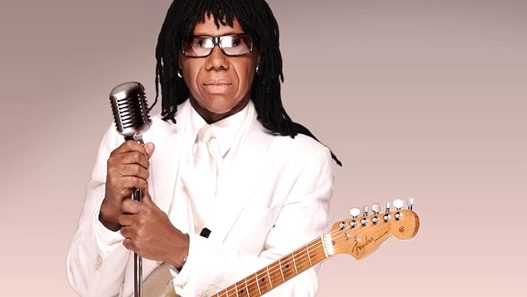
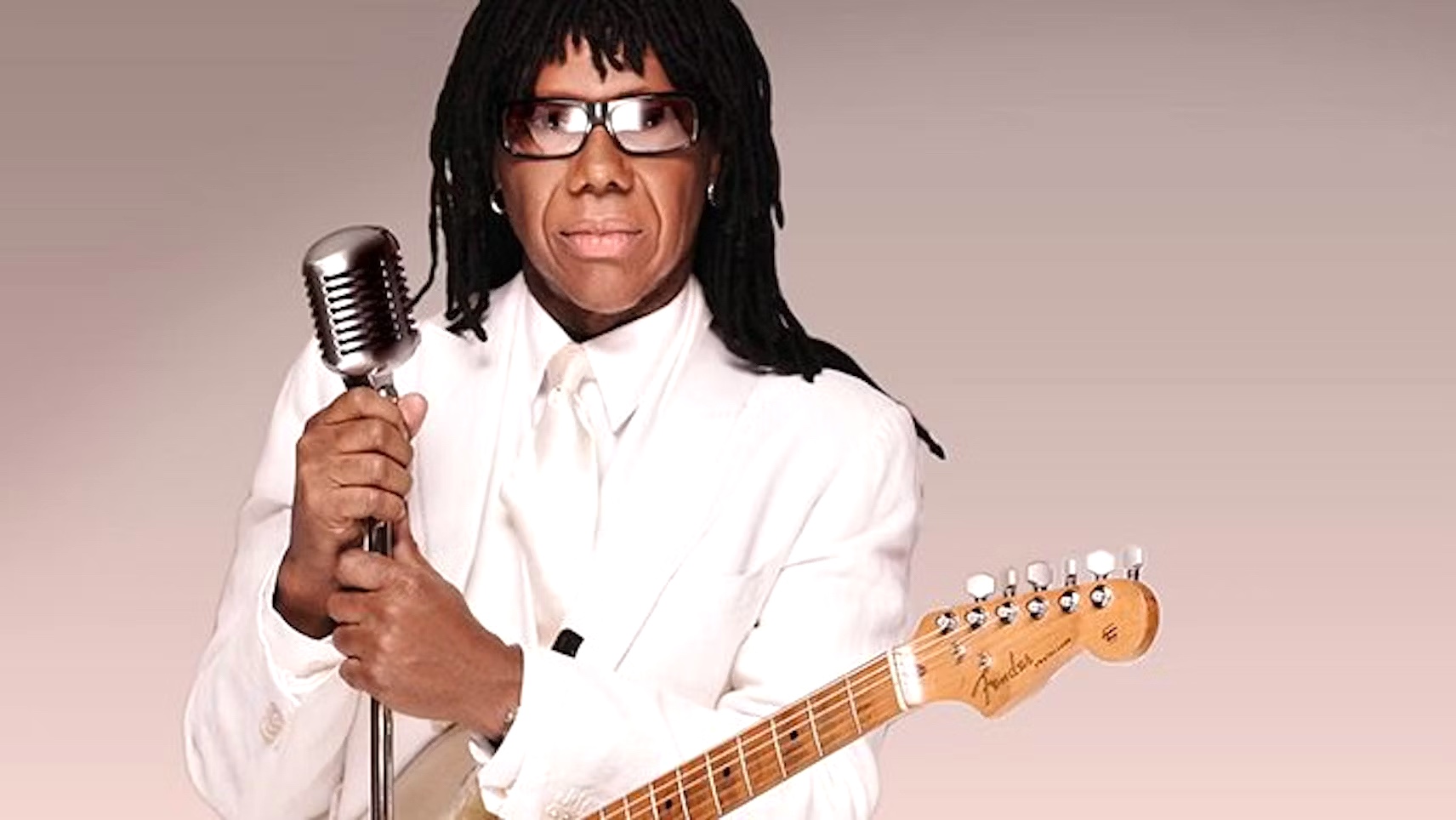
![Diana Ross - I'm Coming Out (ORIGINAL) [Remastered] - 1980 HD & HQ](https://stevepafford.com/core/cache/flying-press/45b18ace28021aef89404f4d7f5e0269.jpg)
